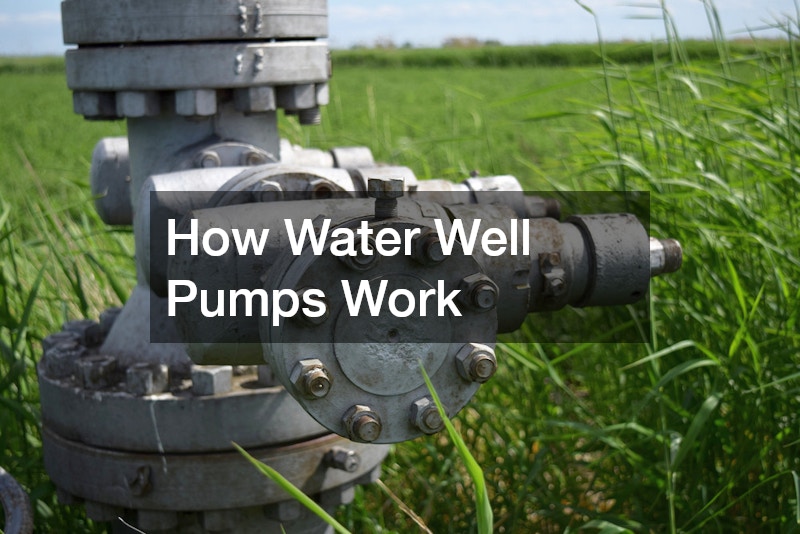

This article will explain the functioning of water well pumps, addressing common questions and topics related to their operation, types, maintenance, and troubleshooting. Water well pumps are an essential part of many residential, agricultural, and commercial properties that rely on private wells for their water supply. These pumps are responsible for drawing groundwater to the surface, ensuring a steady and reliable flow for everyday use.
Understanding how they work can help homeowners and property managers identify potential issues early, choose the right type of pump for their needs, and perform basic upkeep to extend the system’s lifespan and efficiency.
What Are the Different Types of Water Well Pumps?
Water well pumps are crucial for accessing groundwater in various settings, and each type serves a different purpose. Submersible pumps are designed to be submerged in water, making them ideal for deeper wells, while jet pumps are typically used for shallow wells and can be installed above ground. Hand pumps, whereas less common, are a manual option that can be very effective for accessing water in remote areas without electricity.
Another important distinction between these pump types is their operational mechanics. Submersible pumps operate by pushing water to the surface, powered by electric motors, that are encased in a sealed unit to prevent damage. Jet pumps create a vacuum that draws water into the pump, utilizing an impeller to propel the water upward. Hand pumps rely on manual mechanics to create suction and lift water, requiring physical effort from the user.
Furthermore, users should consider the intended use and specific well conditions when choosing a pump type. If consistent water supply is needed, a submersible pump might be preferred, while a jet pump could suffice for seasonal usage. In contrast, hand pumps best serve areas with sporadic water needs or where electrical sources are unavailable. Understanding these differences will help ensure that the selected pump meets users’ needs effectively.
How Do Water Well Pumps Operate?
The operation of water well pumps involves several stages, starting with the initial drawing of water from the well. For submersible pumps, an electric motor turns an impeller that creates a pressure differential, allowing water to be pushed through a series of pipes to the surface. For jet pumps, water is drawn into a jet assembly where it is pressurized and pushed upward due to the vacuum created.
Both systems rely on carefully balanced mechanics to ensure water reaches the household or facility at the correct pressure. In submersible pumps, the sealed motor is placed directly in the well below the water line, which allows it to efficiently push water upward while staying cool and protected. These pumps are often preferred for deeper wells because they can lift water from hundreds of feet below ground. Jet pumps, on the other hand, are usually located above ground and use suction to draw water upward. Shallow jet pumps are ideal for wells less than 25 feet deep, while deep well jet pumps use a two-pipe system to extend their reach further.
In addition to lifting water, pumps often work in combination with a pressure tank. This tank regulates water flow, prevents short cycling of the pump motor, and ensures consistent pressure at faucets and appliances. By understanding these components and how they interact, homeowners can better identify when something goes wrong—such as a drop in pressure, irregular cycling, or reduced flow—and take steps toward maintenance or repair before the issue becomes serious.
What Are Common Maintenance Tips for Water Well Pumps?
Routine maintenance is critical for the longevity of water well pumps, ensuring they function efficiently throughout their operational life. Regular inspection of components such as wiring, motor functionality, and plumbing connections can help spot potential issues before they escalate into costly repairs. Cleaning the intake screen and checking for sediment buildup are also vital practices to maintain water quality and pumping efficiency.
Additionally, keeping an eye on the pressure and flow rates is crucial for assessing pump performance. If issues arise, users should investigate the cause immediately, as lowered flow rates can indicate blockage or pump wear. Implementing an annual servicing schedule with a qualified technician can help foresee and address mechanical failures, thus ensuring continued performance.
How Do You Troubleshoot Water Well Pump Issues?
Water well pumps can encounter various issues that affect their performance, such as loss of pressure, strange noises, or continuous running. When troubleshooting these problems, it’s essential to start by checking for electrical issues, including circuit breaker trips or blown fuses. A qualified professional can help assess electrical connections and the motor’s functionality.
Common symptoms like noise or cycling frequently indicate possible malfunction or wear in the pump or pressure tank. A ticking noise could signify a faulty impeller, whereas constant cycling may suggest a leak in the system. Inspecting the pressure tank and well components for leaks or faults may guide the troubleshooting process and help identify solutions.
Understanding how water well pumps work is crucial for their efficient maintenance and operation. By knowing the types, operation mechanisms, maintenance tips, and troubleshooting methods, users can ensure a consistent water supply from their wells.


